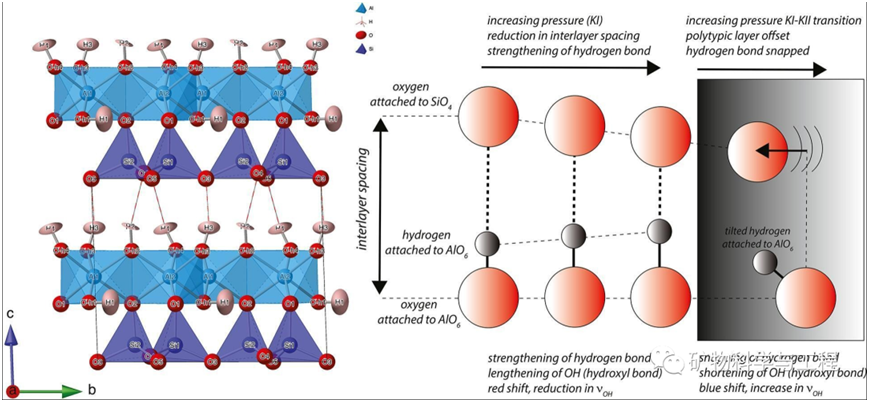
High pressure Raman scattering and X-ray diffraction of Al2Si2O5(OH)4
2023-10-29 10:00Recently, Applied Clay Science reported "High-pressure Raman scattering and X-ray diffraction study of kaolinite, Al2Si2O5(OH)4."

Kaolinite is formed by the weathering of rocks in the continental crust and is also found in Marine sediments in the tropics. The research has experimentally documented the expansion of water molecules into interlayer regions under high pressure, i.e., pressure-induced hydration. This is counterintuitive because the interlayer regions of phyllosilicates are quite compressible, so it is important to understand the underlying mechanisms that lead to interlayer intercalation and expansion.
To address this question, the high-pressure behavior of natural kaolinite from Keokuk, Iowa, was explored. The sample does not contain anatase impurities and thus facilitates the detection of low energy (0-1200 cm−1) and high energy hydroxyl (3000-4000 cm−1) regions using Raman spectroscopy and synchrotron-based powder X-ray diffraction.
The results show that the pressure dependence of the hydroxyl model shows discontinuity at ~ 3 GPa and ~ 6.5 GPa. This is related to the polymorphic transformation of kaolinite from K-1 to K-II phase and K-II to K-III phase. The stress dependence of several low-energy Raman modes exhibits similar discontinuous behavior. The powder X-ray diffraction results based on synchrotron also show discontinuous behavior of unit cell volume and lattice parameters with respect to pressure dependence. Volume analysis and line compressibility analysis show that kaolinite has strong anisotropy, which may be helpful for geophysical exploration in subduction zone environment.
